We are excited to welcome you to Costa Rica!
This booklet will help to provide an overview of the country, information about your upcoming travel, and some tips and suggestions on how to prepare for and maximize your holiday experience. As you take the time to read this helpful booklet, you may find that some of your pre-trip questions and issues may be addressed.
Enjoy your adventure!

Prior to your departure, please make sure the following documents are in order, as they are important documents for your trip.
✓ Passport must be valid for at least six months beyond the last day of your trip.
✓ Return ticket
✓ Airline Tickets.
✓ Money (Cash, debit cards, credit cards).
✓ Visa, if required under these guidelines. (USA, UK, Canadá do not require visa)
We recommend that all participants obtain a short-term traveler’s insurance policy covering baggage, accident/life, and trip cancellation.
Vaccination is not required to enter Costa Rica.
If you need more information, please click here

For domestic flights within Costa Rica, luggage restrictions vary. In most airlines, passengers are allowed to check luggage for up to 40 lbs (18 kgs) and carry-on up to 10 lbs (4.5 kgs) per person.
When you travel with more luggage than the allowed, or if your luggage is heavier or larger than permitted, you will be charged excess luggage. In all cases, excess luggage will be accepted subject to space in aircraft. In some cases, additional luggage cannot be guaranteed to be on the same flight.
Rules are subject to change, always confirm with your airline.

Upon arrival at the airport, you will need to have your documentation ready:
✓ Passport valid for at least 6 months.
✓ Return tickets
✓ Hotel name while in Costa Rica.
Immigration and Customs Process in Costa Rica

Shopping hours in big towns and cities in Costa Rica start at around 9:00 or 10:00 am and continue through 8:00 or 10:00 pm. Shops in cities, big towns and popular areas are open 5-6 days a week; smaller places may close on Sundays, except during high season. Banks in Costa Rica are usually open from 9:00 am to 3:00 or 4:00 pm, from Monday to Friday.
Casual Dining and Cafés: These places often open around 7:00 or 8:00 am and close by 9:00 pm or 10:00 pm. Some may open earlier for breakfast and close later, especially in popular areas.
Fine Dining Restaurants: Typically, fine dining establishments open for lunch around 12:00 pm and close by 2:30 pm, then reopen for dinner around 6:00 pm and close by 10:00 pm.
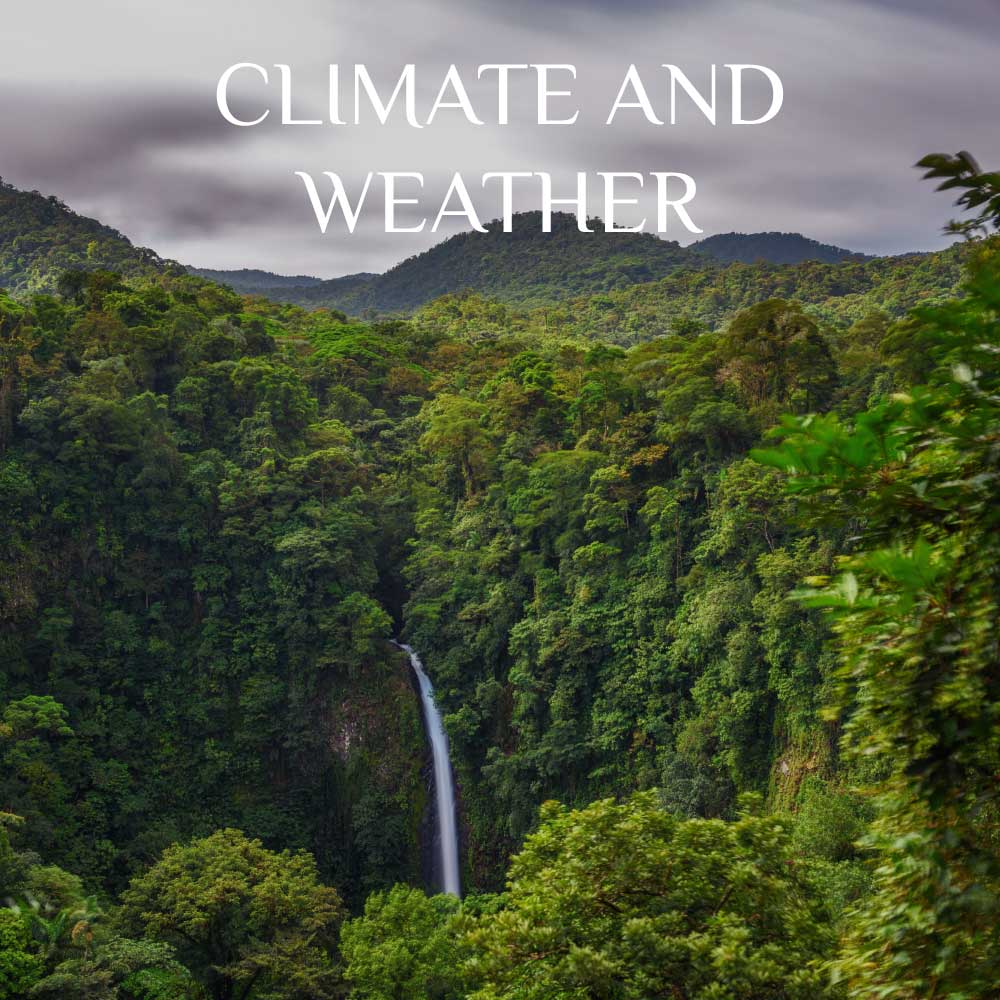
In Costa Rica, the climate varies according to region and altitude. Coastal areas and lowlands are warm and humid, while the central valley has a temperate climate even in winter. The highlands have a milder climate but experience sharp changes in temperature between day and night.
The rainy season runs from May to November, with the Pacific coast receiving the most rain between September and October. The Caribbean coast experiences more consistent rainfall throughout the year. The dry season, or “summer,” typically runs from December to April. Rainfall and weather conditions can vary significantly across different regions.

Wash-and-wear, lightweight natural fabrics are recommended. In keeping with Costa Rica’s relaxed lifestyle, dress is informal on most occasions. However, in larger cities, dress is a bit more formal, as it is customary to wear long pants and a collared shirt. It is recommended that you carry a light jacket and/or rain gear when in doubt about what the weather may bring.

Wi-Fi:
Telephone:

Electricity in Costa Rica operates at 110 volts, the same as in the US. Visitors from outside the US should bring a suitable adapter.
In Costa Rica, the standard plug types are A and B, which are the same as those used in the US. If your devices use different plug types, make sure to bring the appropriate adapter to ensure compatibility.
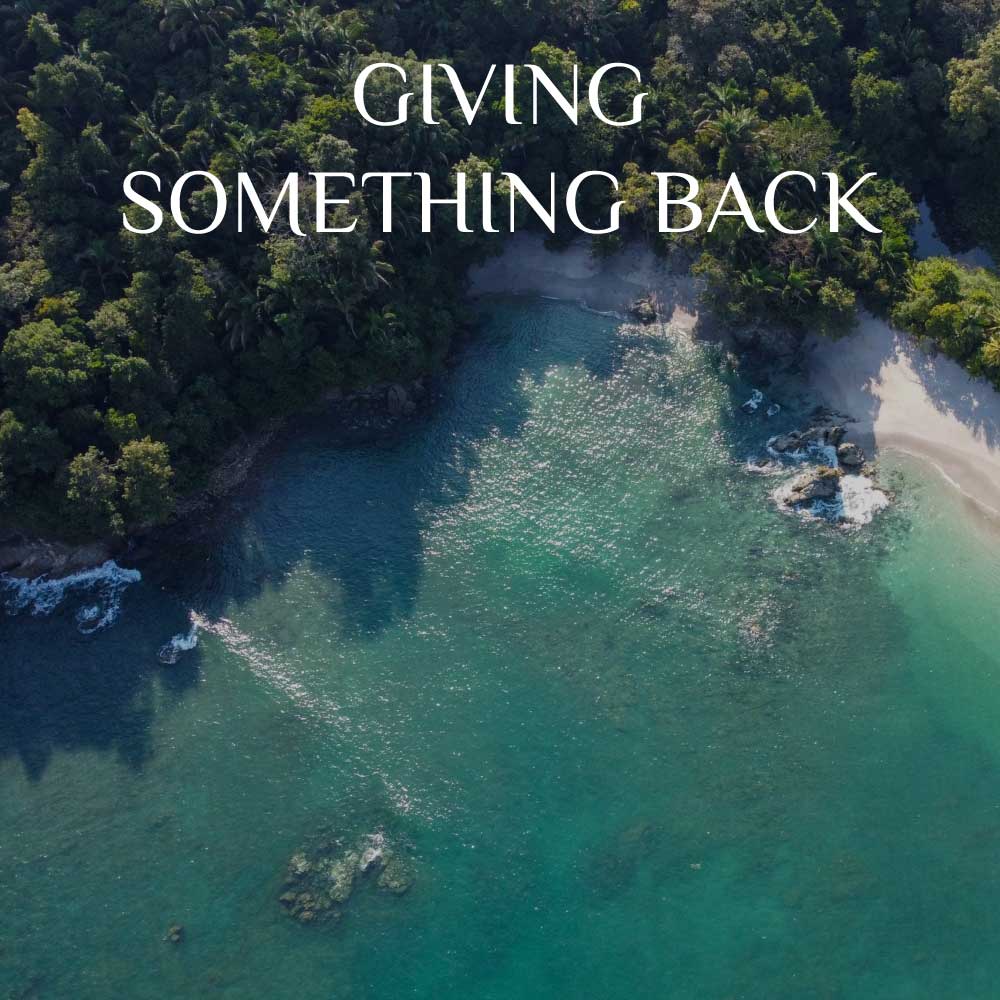
Many of our guests return from their trip with a desire to contribute to local conservation efforts and other non-profit organizations. Our staff has done extensive research into which organizations are effective and can make the most of their generous contributions. We would be delighted to share any information with our clients to help facilitate the donation process.
The Bosque Vivo Foundation is the first, and to date, the only high-altitude reforestation project in Costa Rica. This independent initiative began at a family-run dairy farm with sustainable practices, located on the hillsides of Barva Volcano in the country´s northern region.
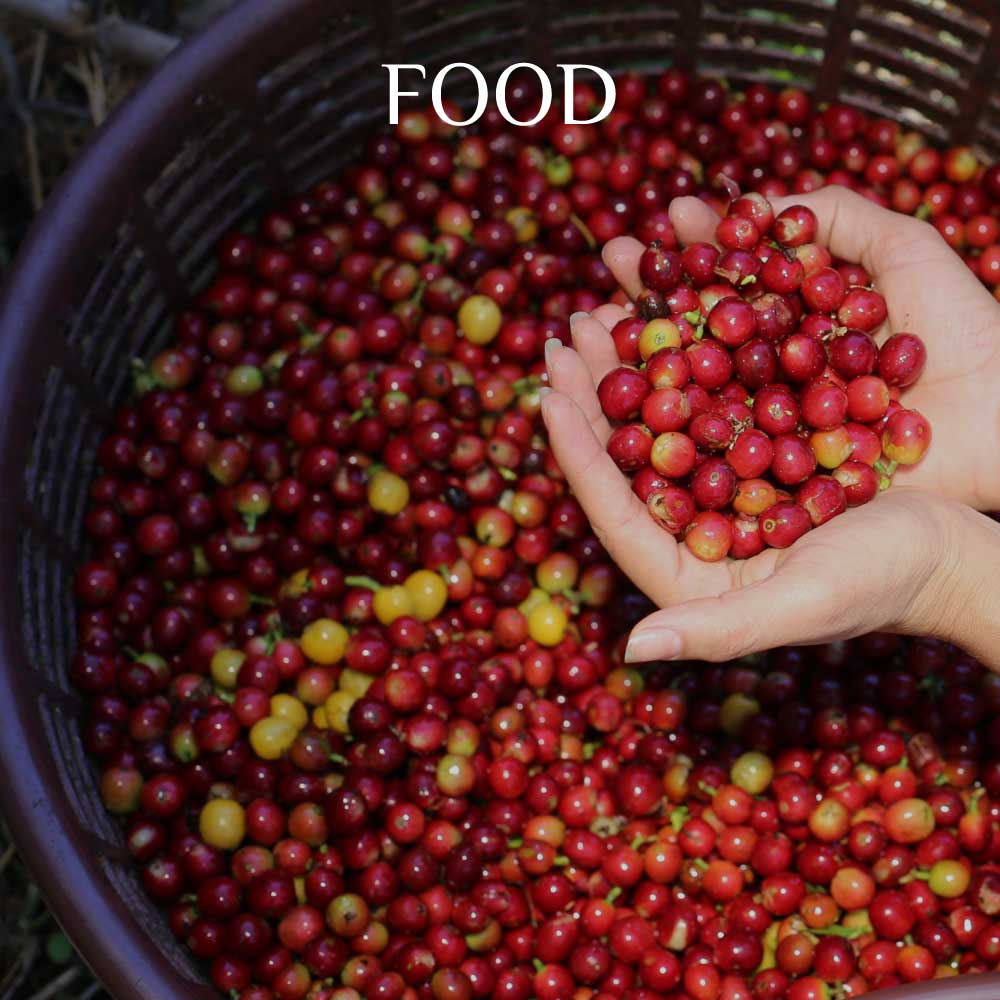
Costa Rica offers a variety of regional dishes with fresh meats, seafood, vegetables, fruits, and drinks. The country is known for its quality coffee, often shade-grown and fair-trade. While international food is available, traditional “sodas” (local restaurants) provide authentic local options. The Nicoya Peninsula, noted for its long-lived residents, contributes to the focus on simple, nutritious food. Additionally, the Caribbean coast of Costa Rica is known for its distinct flavors, including dishes featuring coconut, plantains, and spicy jerk seasoning.

Costa Ricans hospitality, friendliness, and openness are renowned around the world. Each region possesses its own customs, local holidays, culinary specialties, and preferred sports. The majority of the country follows soccer (fútbol), but other sports like surfing are also popular, especially in coastal areas.
Costa Rica contains numerous traces of pre-Columbian civilizations, including the Diquís, Chorotega, and Huetar, which influence many aspects of life nowadays. Costa Rica is also home to distinct and vibrant modern cities. San José is the capital and a cultural hub with a rich blend of tradition and modernity. Costa Rica has its own distinct culture, although it shares similar characteristics with other Central American countries.
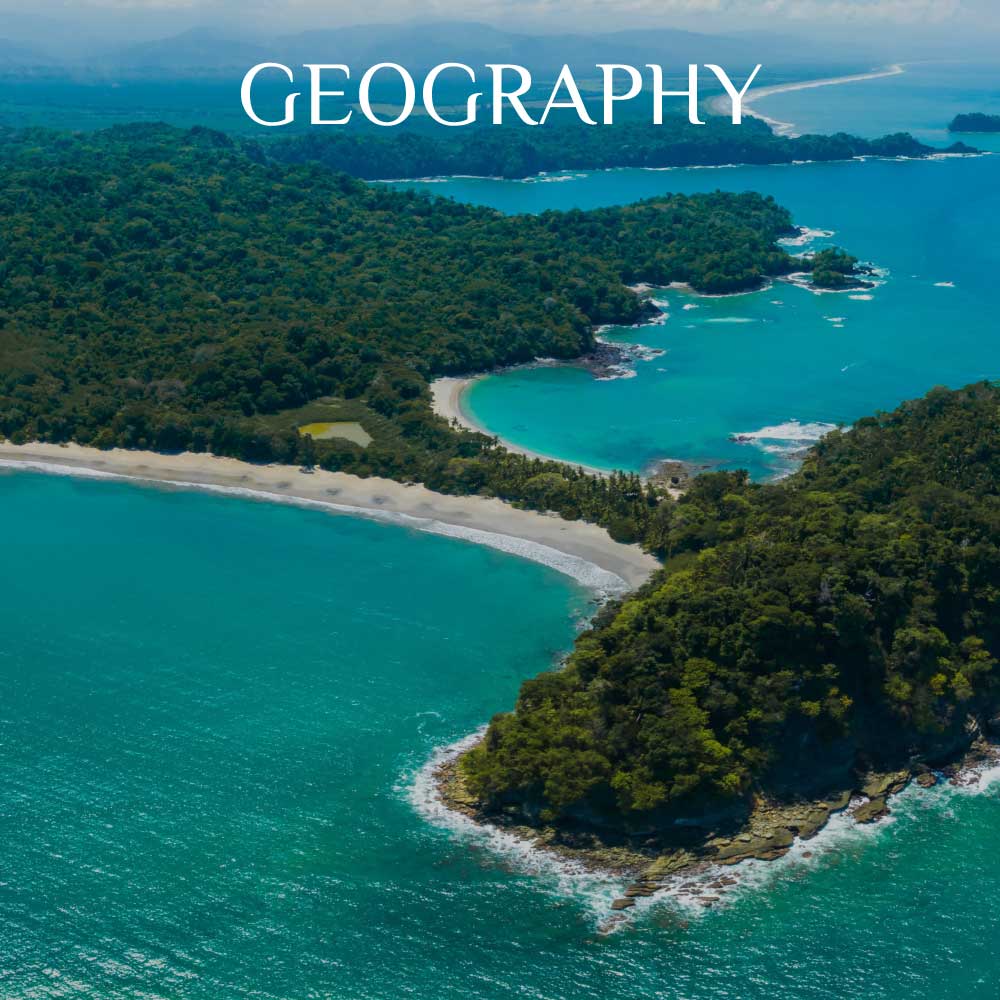
Costa Rica is comprised of 7 provinces: San José, Alajuela, Cartago, Heredia, Guanacaste, Puntarenas, and Limón. Its northern border stretches along Nicaragua, and its southern border meets Panama.
Surrounded by numerous bodies of water, Costa Rica borders the Pacific Ocean to the west and the Caribbean Sea to the east. The physical geography is rather varied throughout the country. The high, rugged mountains are contrasted by low-lying coastal plains, high plateaus, and lush rainforests.
The highest point in the country is Cerro Chirripó at 3,820 m (12,533 ft), and the lowest is the Pacific Ocean at sea level.
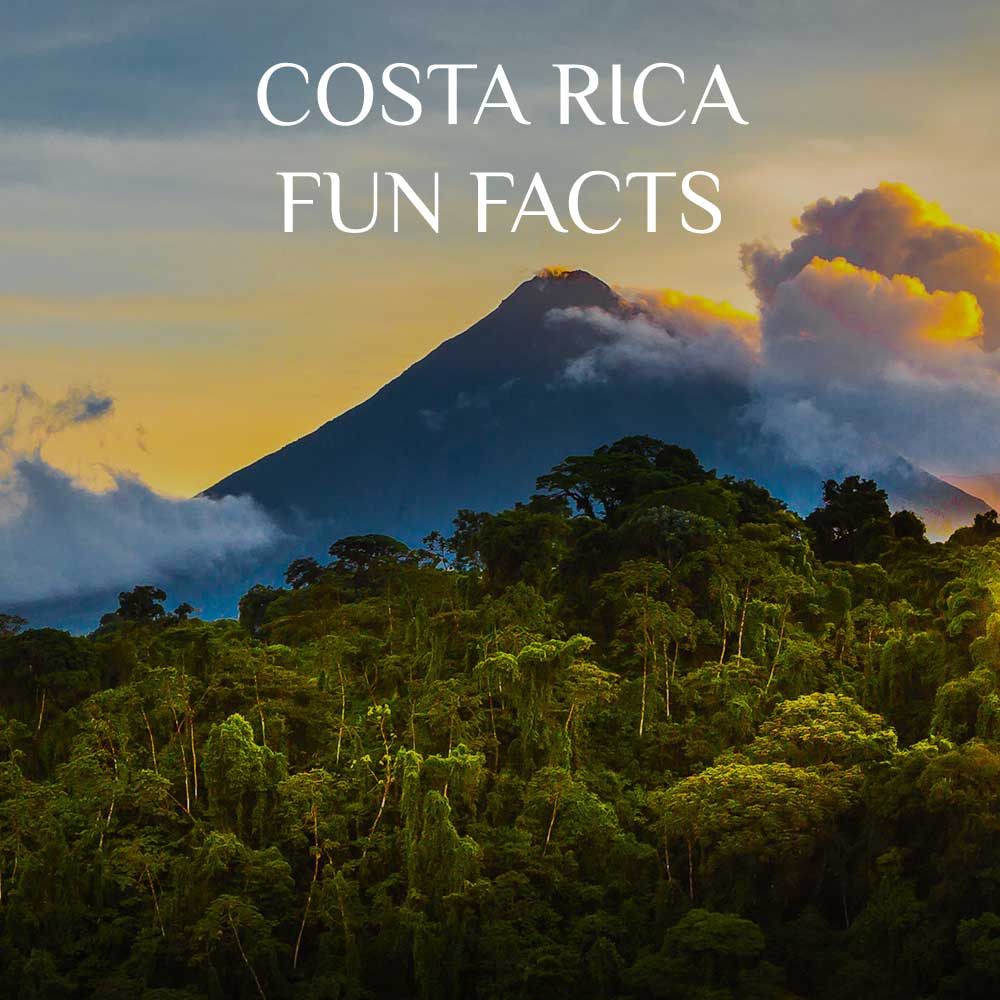
Costa Rica is home to about 5% of the world’s biodiversity, despite its small size. The country has a wide range of ecosystems, including rainforests, cloud forests, and coral reefs.
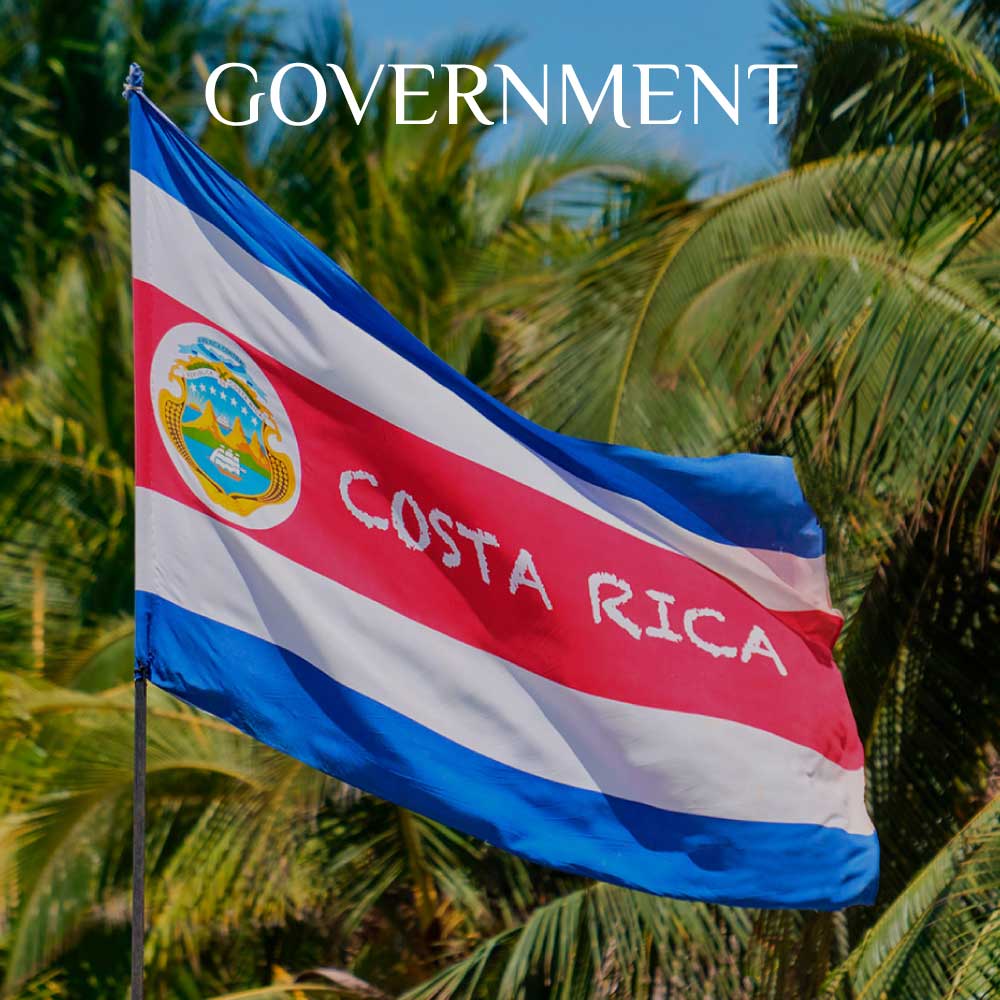
Costa Rica is run by a democratic republic under a centralized government. The capital of Costa Rica is San José. Costa Rica abolished its military in 1949 and has since focused on education, health, and environmental protection.
The Constitution was promulgated on November 7, 1949.
Costa Rica’s National Day of Independence is September 15.
The government consists of an Executive, Legislative, and Judicial Branch. Presidential elections are held every 4 years, and there is a one-term presidential limit in the constitution.

Spanish is the official language of Costa Rica. There are numerous indigenous languages that are still spoken in some regions. English is widely spoken, especially in tourist areas.
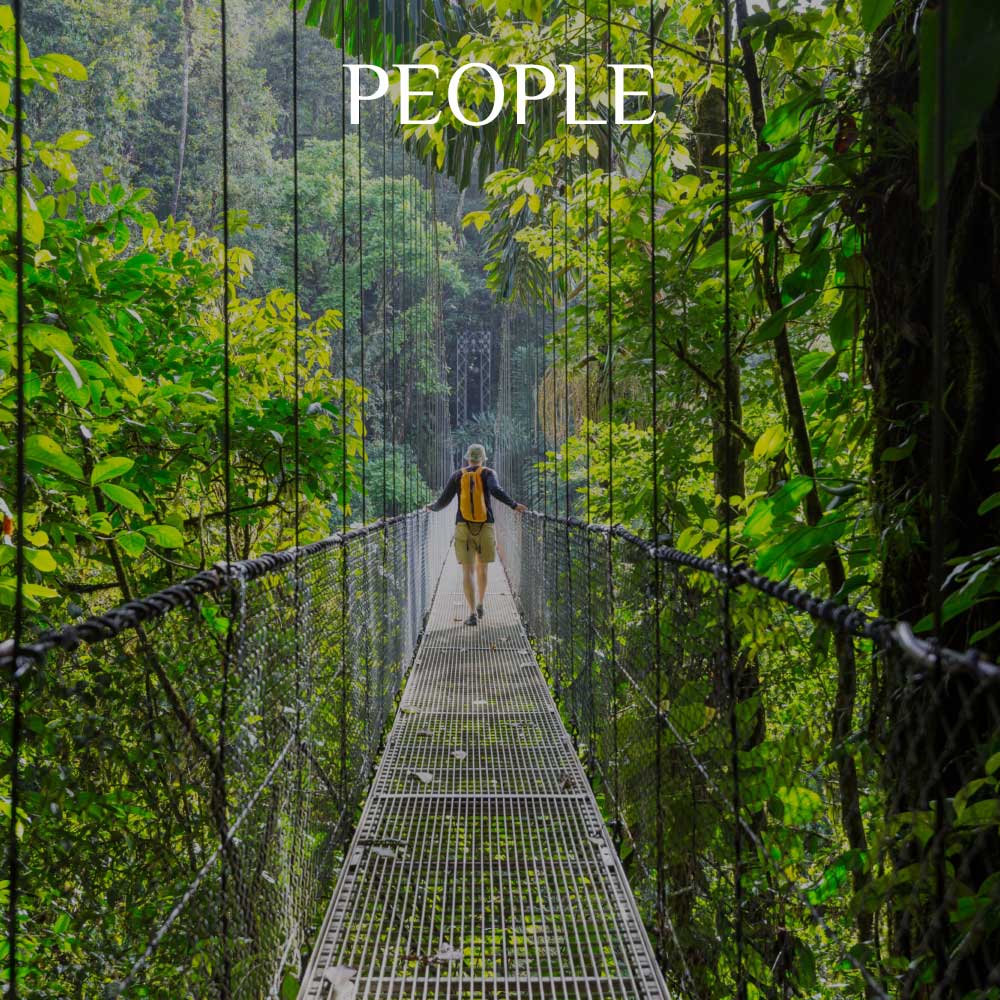
Costa Rican people are extremely open and relaxed, very warm, and uncommonly friendly! Family, soccer, and socializing are of utmost importance to most Costa Ricans. Sundays are often put aside for spending time with families walking through the park, eating big dinners, and participating in activities with friends and family. Although their population is rather diverse, one commonality shared amongst the various peoples is their hospitality and willingness to help and befriend new visitors.
The current population of Costa Rica is about 5 million people, with about 2 million residing in the Greater Metropolitan Area, which includes the capital city, San José. Other major cities include Alajuela, Cartago, and Heredia.

The unit of currency in Costa Rica is the Costa Rican Colón (CRC). Credit cards are widely accepted, especially in major cities and tourist areas.
However, in more remote locations, using credit cards might be challenging, so it’s a good idea to carry cash for tips or shopping. U.S. dollars in small denominations are also commonly accepted in most cities and tourist areas.
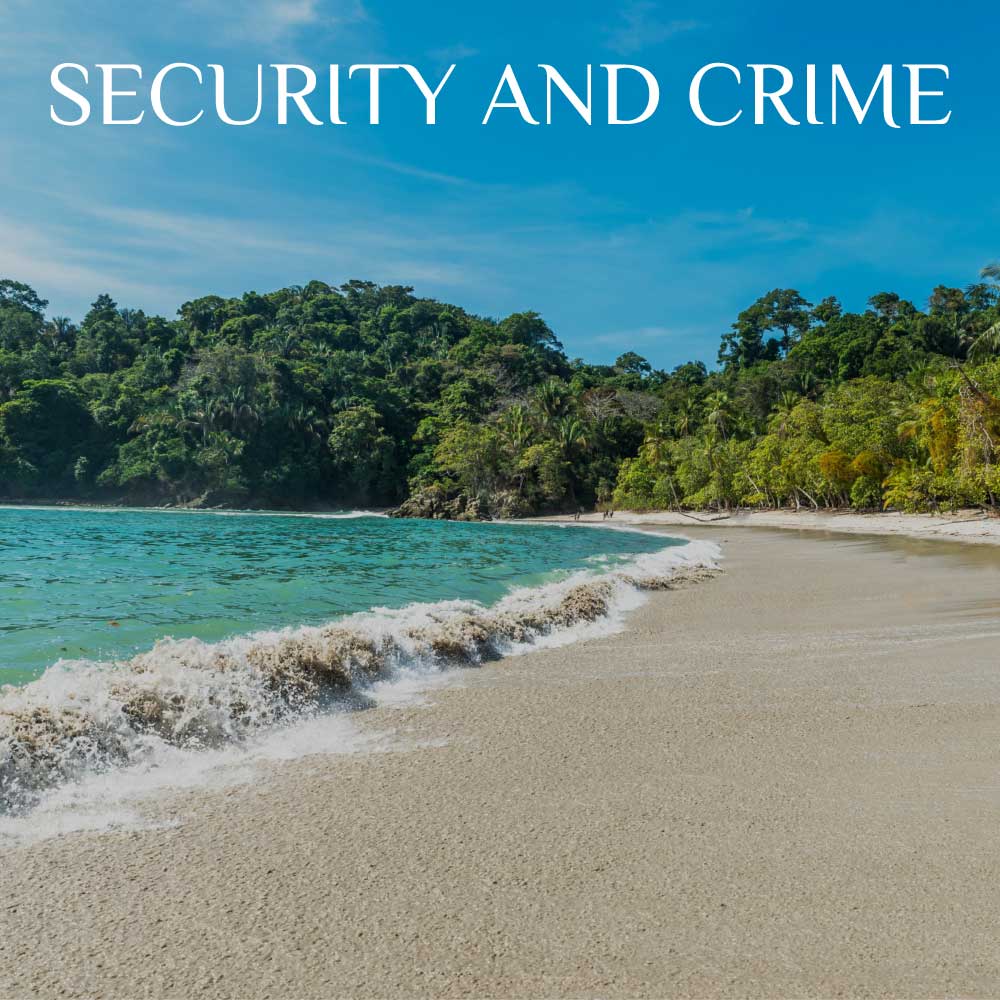
Costa Rica is generally very safe, but it’s always smart to stay aware of your surroundings while you’re exploring. Keep your passport and important documents handy and it’s always good keep an eye on your luggage and personal items, especially in busy spots like airports, hotel lobbies, and restaurants.
And remember, consider leaving valuable jewelry at home. Embracing a more modest style will help you blend in and enjoy the pura vida lifestyle to the fullest!

Costa Rica is on Central Standard Time (CST), which is GMT -6 hours. Unlike some countries, Costa Rica does not observe Daylight Saving Time, so the time difference remains consistent throughout the year.

In Costa Rica, tipping is appreciated but not always expected in the same way as in other countries. Here are some guidelines:
A 10% service charge is usually included in the bill. However, if you receive exceptional service, it is customary to leave an additional 5-10%. In smaller, informal dining establishments, leaving some change is a kind gesture of gratitude.
It is customary to tip housekeeping staff $2-5 USD per person, per night. For porters, $1-2 USD per bag is standard.
Taxi drivers do not generally expect a tip unless they have gone out of their way to provide special assistance. Rounding up the fare is appreciated.
For local guides, $10-15 USD per person, per day, or $5-8 USD per person for a half day is appropriate. For drivers, $5-10 USD per day is sufficient. If you have a premium guide who accompanies you throughout your stay and assists beyond the standard tours, tipping $15-20 USD per day is recommended. Ultimately, tipping is at your discretion and should reflect the level of service you feel you received.
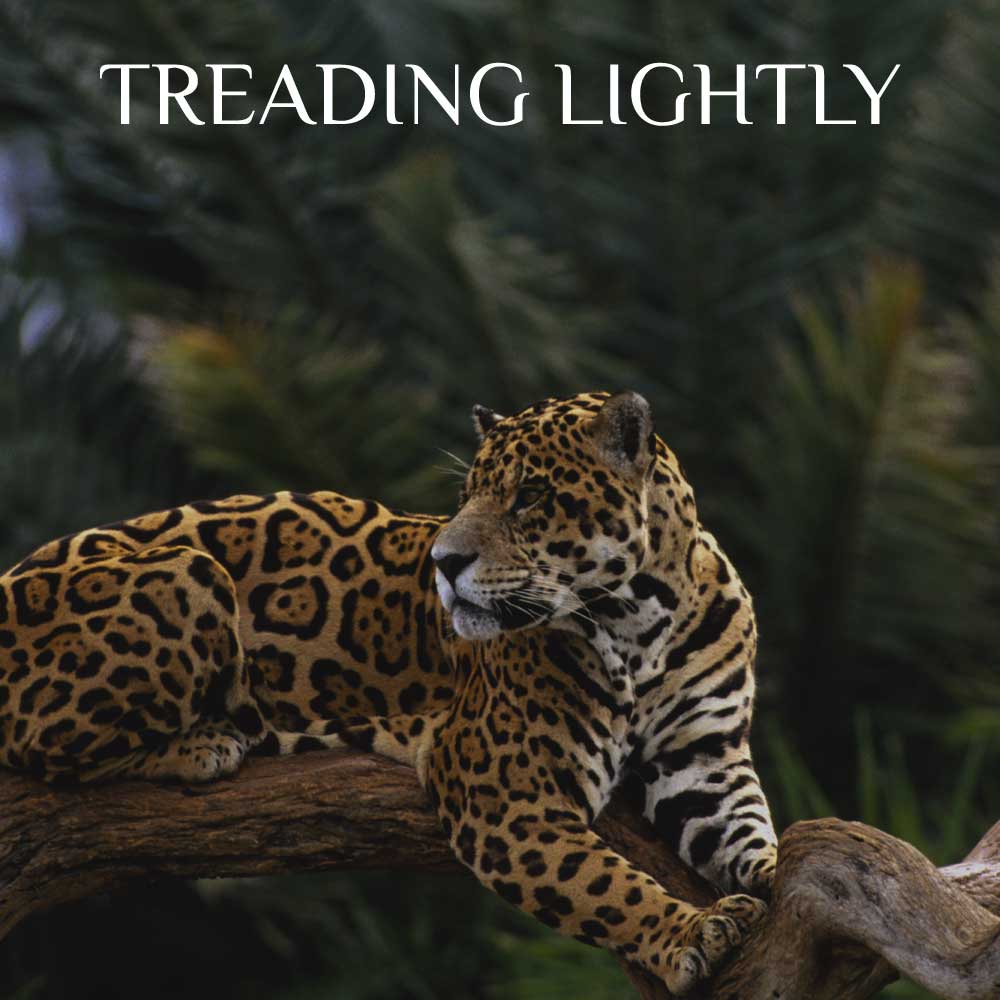
Journey Costa Rica is dedicated to preserving the character of the destinations we visit. We recognize that our trips impact indigenous cultures and the environment, but we believe that our trips can provide meaningful and important ways for local people to create economic development, which relieves pressure on primary and natural resources.

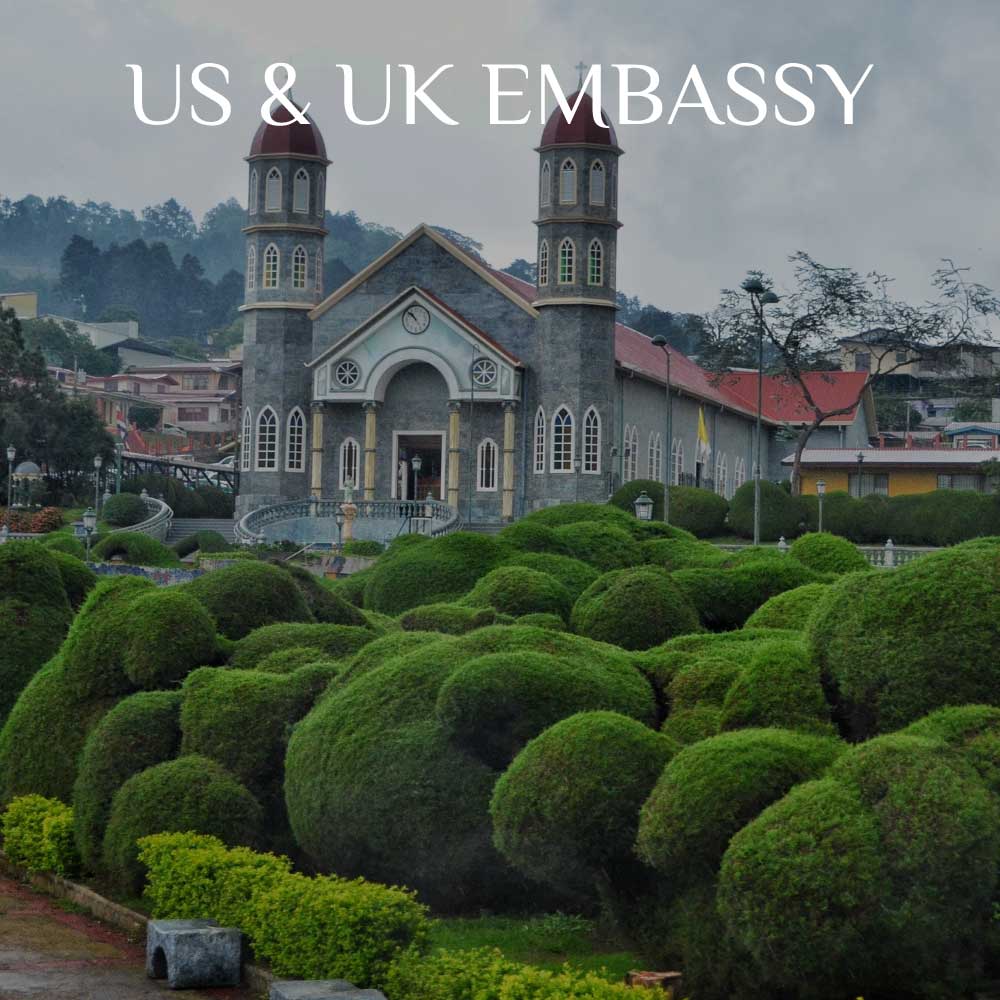
Many of our guests return from their trip with a desire to contribute to local conservation efforts and other non-profit organizations. Our staff has done extensive research into which organizations are effective and can make the most of their generous contributions. We would be delighted to share any information with our clients to help facilitate the donation process.
The Bosque Vivo Foundation is the first, and to date, the only high-altitude reforestation project in Costa Rica. This independent initiative began at a family-run dairy farm with sustainable practices, located on the hillsides of Barva Volcano in the country´s northern region.
While we make every effort to make sure that the information contained herein is accurate at the time of publishing, conditions on the ground and policies and procedures are subject to change. Please help us keep this information updated by letting us know of any discrepancies or important information that you would like to see.
We appreciate your understanding and assistance!
We are Journey, an award-winning travel company that specializes in creating luxury, tailor-made itineraries as individual as our travelers. After 20 years as leaders in Mexico´s luxury travel world, we expanded to offer our renowned service and outstanding luxury trips in Costa Rica and Brazil.